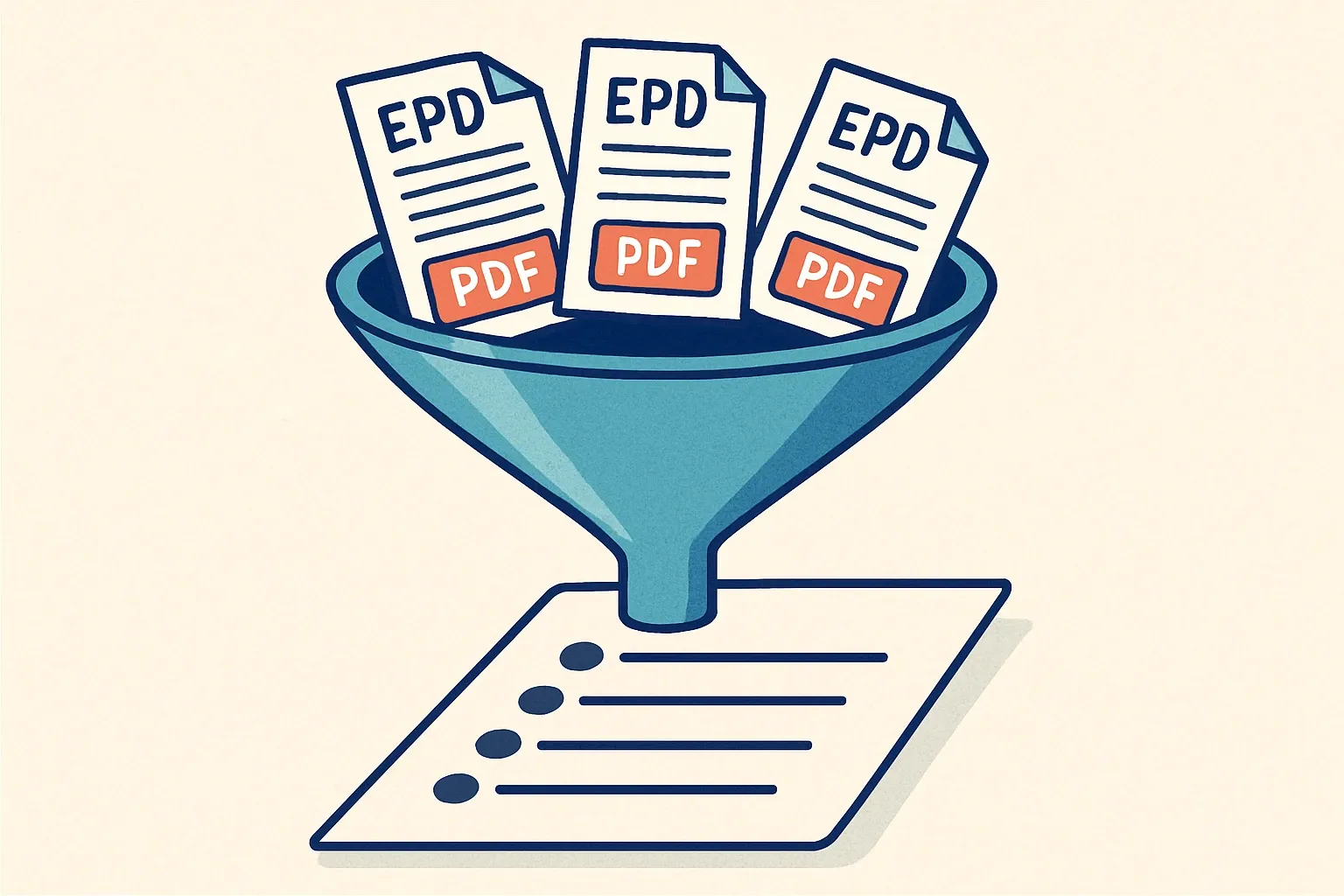Turn EPD Scores into Spec-Winning Stories
An architect’s inbox is a battlefield: twenty tabs of ‘sustainable’ claims, one seat on the basis-of-design podium. Reps who arrive with hard EPD numbers instead of glossy adjectives cut through the noise. Here is a playbook for flipping Sto, YKK AP, and CRL data into the memorable proof points specifiers crave.


Specs pivot on numbers, not adjectives
Architects read environmental claims the way TSA scans luggage—everything gets x-rayed. Life-cycle metrics inside an Environmental Product Declaration (EPD) are the only figures that travel un-questioned through that scanner. Hand-waving about green materials can’t compete with a clear Global Warming Potential (GWP) table.
Sto: thirty-three declarations, three angles
Sto’s facade catalog now lists 33 product-specific EPDs covering EIFS and rainscreens (Sto website, 2024). Pick the system that matches your project and spotlight:
- Lower GWP per square foot than the EIFS industry average, credited partly to mineral-wool options.
- Documented service life over 50 years reduces replacement impacts—important for owners calculating total carbon.
- Compatibility with fire-rated assemblies already listed in their ICC reports, saving designers a second lookup. Mention all three and you will hear keyboards clicking.
YKK AP: aluminum math in plain English
YKK AP touts product-specific EPDs for seven façade categories—the first framing supplier to cover its full U.S. lineup (YKK AP, 2024). Translate the dense PDF into quick cues:
- "Each pound of recycled billet trims 9 kg CO₂e from the frame" (table 4 of the window-wall EPD).
- Factory extrusion in Dublin, GA means transportation is already within the LEED regional radius for most East-coast jobs.
- All declarations are UL-validated through 2029, so no mid-project renewals.
CRL: borrowing the extrusion baseline
CRL’s glass-and-aluminum rail packages rely on standard North American extrusions. The Aluminum Extruders Council UL EPD (2022) gives you cradle-to-gate impact factors for mill-finish, painted, and anodized profiles (AEC, 2022). Until CRL publishes product-level sheets, map those baseline values to linear-foot take-offs in your railing schedule. Designers care less about brand authorship than data integrity.
Connect dots designers forget
Slide one: product photo. Slide two: EPD page with the relevant module totals circled. Slide three: a bar chart comparing that total to the PCR benchmark median. If the gap is ≥15 %, you have a differentiation story the competition can’t match.
Pre-empt the three classic objections
"Your numbers use recycled content—what if supply dips?" Answer with the extrusion EPD’s sensitivity analysis showing GWP stays below the benchmark even at 25 % scrap.
"Does the declaration expire mid-construction?" Point to Sto’s 2029 and YKK’s 2030 validity dates.
"How does end-of-life recycling count?" Highlight module D credits; most architects still ignore them, so you look like the adult in the room.
Follow up after the bid
Email the sustainability lead a tidy spreadsheet linking each CSI spec line to its EPD and PCR reference. Ninety seconds of scrolling beats a 90-page PDF. That simple act of service often nudges your product from approved equal to sole source. Dont underestimate that.
Frequently Asked Questions
How do I find the right PCR when Sto offers multiple EIFS systems?
Check competitors first. If three rival EIFS products cite the same EN 15804-A2 based PCR, use that to keep comparisons apples-to-apples. Sto’s technical desk will confirm compatibility.
Can I cite an industry-wide extrusion EPD for CRL railings on a LEED v4.1 project?
Yes. LEED accepts product-specific or industry-wide EPDs for the MR c2 credit; industry sheets earn one point instead of two.
YKK’s EPD shows recycling rates—do I need mill certificates too?
The EPD already includes average recycled content verified by UL. Mill certs are optional unless the spec explicitly demands batch-level proof.
What if an EPD expires in the middle of construction?
The declaration remains valid for submittals dated before its expiry. Re-quotes after the date need the renewed version, so schedule procurement docs accordingly.
